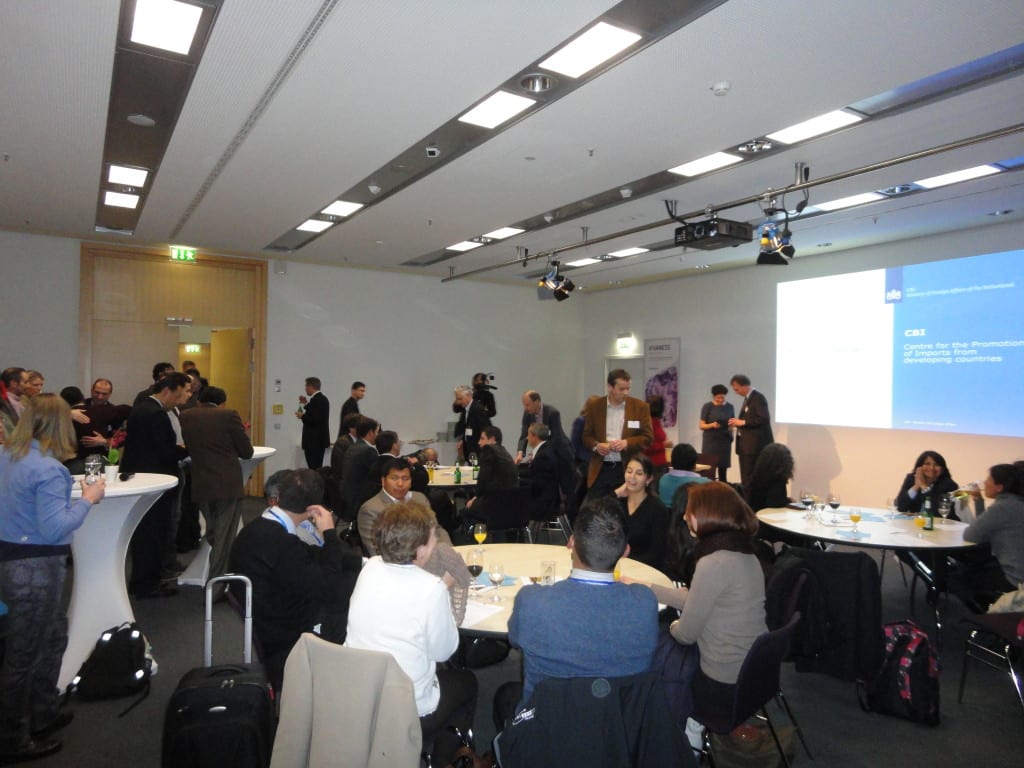After a first round with quinoa experts in the end of January, CBI’s quinoa scenario planning process found its closure in an international expert meeting in Nürnberg, Germany. In the context of the organic trade fair Biofach, quinoa exporters from Bolivia, Peru, Ecuador and Colombia, European importers, researchers, scientists and many other key actors were present to listen to and discuss about the various scenarios that Freek Jan Koekoek –managing director of Mercadero – presented on behalf of CBI.
The scenarios, that were thought of being determining for the South-American quinoa producers as well as for quinoa traders and all its consumers, were categorized into the following four:
- Superquinoa, in which quinoa remains an exclusive niche product which is ethical, organic, authentic and healthy.
- The collapse: Due to unsustainable growth of quinoa production in Bolivia, quinoa’s reputation becomes more negative as scandals erupt. The consumers’ interest decreases as fast as it has boomed.
- New specialty staple food: In this scenario, demand as well as supply will both increase and become more wide-spread. Quinoa will be cultivated in newly emerging production areas as it will be consumed from the US over the Arab Emirates to China. Due to increasing supply and demand, it will become more accessible and affordable.
- New applications: The largest share of quinoa will go to food manufacturing companies as they recognize quinoa’s potential.
Discussing the quinoa scenarios, at the Biofach 13.2.2013; Picture: Inge Vos
At the first expert gathering, it was almost commonly concluded that a combination of scenario 1 and 3 will take place. In some media, the quinoa boom is compared with the South-American gold rush and will have a phase of disillusionment (hence scenario 2), but experts conclude that the quinoa trade is already established enough and will not collapse that easily. As it became evident during the Biofach, the emergence of new producing countries is not only a future scenario but a fact. Apart from the mechanized large scale quinoa production in the US, the Peruvian coastal area and France, we met representatives of Indian and Chinese quinoa growers on the trade fair. Having a different quinoa grain than the South-Americans, they also have a different, obviously less traditional production and business approach.
Due to the given facts and the high prices for South-American quinoa, the question arose whether the Bolivians will be able to compete with countries such as China, India and other potential quinoa producers?
As there is an existing market for quinoa, both supply and demand will continue growing. Due to increasing amount of production areas, quinoa will become better available and affordable. There is a risk for Bolivian and Peruvian manually cultivated quinoa to slowly disappear from the market due to increasing competition. Especially for processed products, in which the origin of the ingredient is not of big concern to the consumer, manufacturers that currently use Bolivian high quality quinoa and its producers are threatened to lose their market position.
The solution for the Bolivian producers and processers to survive that conventionalization phase is to differentiate their quinoa as the “real” one – Quinua Real. It was agreed upon that the most realistic and beneficial for all would be to find a balance between scenario 1 and 3. In order to achieve a combination of quinoa as an authentic product from the Andes and a specialty staple from anywhere in the world, it is important to circumvent the loss of Quinua Real, or better the quinoa from Andean areas and everything that is connected with it: the small-scale producer, the organic cultivation method, the high altitude and the lama manure. Since there is no evidence that Bolivian quinoa is better than the Peruvian one and the Ecuadorian is more traditional than the Colombian one, the Andean producing countries – that are all equally threatened – should not persist on the fact that “their’s is better”. On the contrary, they should collaborate in order to develop an Andean quinoa, that is differentiated and maybe protected with a denomination of origin from quinoa coming from non-traditional production countries.
Emphasis should be paid to communicating the history of the Andean quinoa throughout the supply chain until the consumer.
Another important remark, which comes from the traders’ side mentioned that in the importer’s eye, a “good” quinoa does not necessarily come from the area around the Titicaca lake for example, but the best quinoa comes on time, is organic, clean from residues and dust and is traceable. Therefore, producing countries together with the consuming countries need to work on making the supply chains stronger and more transparent which guarantees for a more reliable and clean product. Constant dialogue between the actors is hence essential.
A third approach of avoiding scenario 2 – which would be detrimental for all actors – is to decrease the market price for quinoa; consensus was reached that this should happen as soon as possible.
We conclude that the expert meeting has been successful and that there is a high level of motivation to collaborate and make the sector continue as successful as at now but with less scandals and affordable prices.

